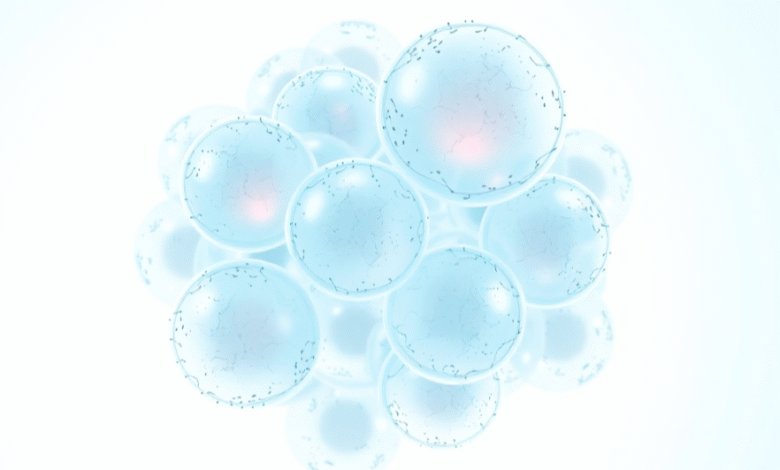Unlocking Protein Expression with HEK293 Cells

Introduction
HEK293 cells are super important in biology research, especially for studying proteins. These cells come from humans and help scientists understand how cells work and make important proteins. In this article, we’ll explore how HEK293 cells are used to study proteins and why they’re so useful. We’ll look at what makes these cells special, their benefits, and how they’re used in different areas of medical research, from finding new medicines to understanding how cells work.
Key Applications of HEK293 Cells
- Recombinant protein production
- Receptor-ligand interaction studies
- Protein-protein interaction analysis
- Drug screening and toxicity testing
- Cellular signalling pathway investigations
- Gene function studies
Background on HEK293 Cells
Origin and Characteristics
HEK293 cells were first created in 1973 from human embryonic kidney cells. Scientists gave these cells special abilities that make them great for research. HEK293 cells grow quickly, are easy to work with, and can be used with many different types of genetic instructions. The transformation of these cells was achieved using sheared adenovirus 5 DNA, which integrated into the cellular genome, resulting in their unique properties.
Some key features of HEK293 cells include:
- They stick to surfaces when growing in labs, forming adherent monolayers
- They have a slightly irregular shape, often described as epithelial-like
- Their size is about 13 micrometers (very tiny!), making them efficient for culture and transfection
- Scientists can easily change their genes through various transfection methods
- They have a rapid doubling time of approximately 24 hours, allowing for quick experimental turnaround
- They possess a near-diploid karyotype with a modal chromosome number of 64
Advantages in Research
HEK293 cells are special because they come from humans. This means they can make proteins that are very similar to the ones in our bodies. Scientists love using these cells because they’re easy to grow and work with. They can also be changed to make different proteins that scientists want to study.
Here’s why scientists like using HEK293 cells:
- They can add the right sugar molecules to proteins, just like our cells do
- It’s easy to put new genes into them
- They can make proteins for a short time or for a long time, depending on what researchers need
- They’re good at making a lot of protein
- Because they’re human cells, they’re great for studying how human cells work
Protein Expression in HEK293 Cells
Recombinant Protein Production
One of the main reasons scientists use HEK293 cells is to make proteins. These cells are great at producing proteins that are usually found inside cells or on their surface. The proteins made by HEK293 cells are often folded correctly and have the right sugar molecules attached, just like they would in our bodies. This is crucial for maintaining protein function and stability, especially for complex human proteins that require specific post-translational modifications.
HEK293 cells are especially good at making:
- Proteins that cells release into their surroundings, such as growth factors and cytokines
- Proteins that sit in cell membranes, including receptors and ion channels
- Complex proteins that need special processing, like multi-subunit enzymes or large structural proteins
- Antibodies and antibody fragments, which are crucial for immunological research and therapeutic development
- Viral proteins for vaccine development and virology studies
- Fluorescent proteins for cellular imaging and protein localization studies
Transient vs Stable Transfection
Scientists can use HEK293 cells in two main ways to make proteins:
- Transient transfection: This is like giving the cells a quick job. Scientists put new genes into the cells, and the cells make the protein for a short time, usually a few days. This is fast and good for testing things quickly.
- Stable transfection: This is more like giving the cells a permanent job. The new genes become a part of the cell’s DNA, and the cells can make the protein for a long time. This takes longer to set up but is better for making lots of protein over time.
Both methods have their uses. Transient transfection is faster and good for testing things quickly. Stable transfection is better for making lots of protein over time.
Applications in Functional Studies
Receptor-Ligand Interactions
HEK293 cells are very useful for studying how different molecules interact with cells. Scientists can use these cells to make special proteins called receptors. These receptors sit on the cell surface and act like tiny antennas, picking up signals from other molecules. This helps scientists understand how cells communicate and how medicines might work.
Some examples of what researchers study with HEK293 cells include:
- G protein-coupled receptors (GPCRs): These are important for how cells respond to hormones and other signals
- Ion channels: These control the flow of ions in and out of cells
- Antibody targets: These help scientists develop new medicines
- Cytokine receptors: These are crucial for immune system function
- Neurotransmitter receptors: These help brain cells communicate
Protein-Protein Interactions
Another cool thing scientists can do with HEK293 cells is study how different proteins work together. They can put two or more different proteins into the cells and see how they interact. This helps researchers understand complex processes in our cells, like how signals are sent from one part of the cell to another.
Drug Screening and Toxicity Testing
HEK293 cells are also super helpful for testing new medicines. Scientists can change these cells to make them more like the cells a medicine is supposed to target. Then they can use these modified HEK293 cells to:
- Test lots of potential medicines quickly
- See if a medicine does what it’s supposed to do
- Check if a medicine might be harmful to cells
- Study how drugs are processed by the body
- Investigate how different drugs might interact with each other
- Develop tests for specific diseases or cell processes
Limitations and Considerations
Overexpression Artefacts
While HEK293 cells are amazing tools, scientists have to be careful when using them. Sometimes, when cells make too much of a protein, it can cause problems. The cells might behave differently than they would in a normal body. Scientists need to be aware of these issues:
- Proteins might clump together or fold incorrectly
- Cell signals might get mixed up
- Too much protein might be harmful to the cells
- Cells might change shape or act differently
Researchers always need to double-check their results to make sure what they see in HEK293 cells is the same as what happens in real tissues.
Read more: Exploring the Role of 7737025564 in New Age Tech Solutions
Alternatives to HEK293
HEK293 cells are great for many things, but they’re not perfect for everything. Sometimes scientists need to use other types of cells, depending on what they’re studying. Some alternatives include:
- CHO cells: These come from hamsters and are good for making lots of protein
- HeLa cells: These human cells are often used in cancer research
- Primary cells: These are taken directly from tissues and are more like “natural” cells
- Sf9 insect cells: These are used for making proteins that are hard to make in mammal cells
- Yeast cells: Useful for studying basic cell processes
- Stem cells: These can turn into different types of cells
Each type of cell has its own strengths and weaknesses, so scientists choose the best one for their specific research question.
Conclusion
HEK293 cells are amazing tools that have changed how scientists study proteins and develop new medicines. These cells help researchers make human-like proteins, study how cells talk to each other, and test new drugs. While they have some limitations, HEK293 cells are still super important for many types of research.
As science moves forward, HEK293 cells will probably keep being important for many studies. They’re great at acting like human cells and are easy to work with, which makes them really valuable for understanding human biology and creating new treatments for diseases. New ways of editing genes, like CRISPR, might make HEK293 cells even more useful in the future, especially for personalized medicine and gene therapy research.
Whether you’re a scientist or just interested in biology, knowing about HEK293 cells opens up a world of cool science. These tiny cells help make discoveries that could one day lead to big breakthroughs in medicine and our understanding of life itself. As we look to the future, HEK293 cells will keep helping us learn more about how cells work, how to make new medicines, and how our bodies function.



